Perennial display planting scheme
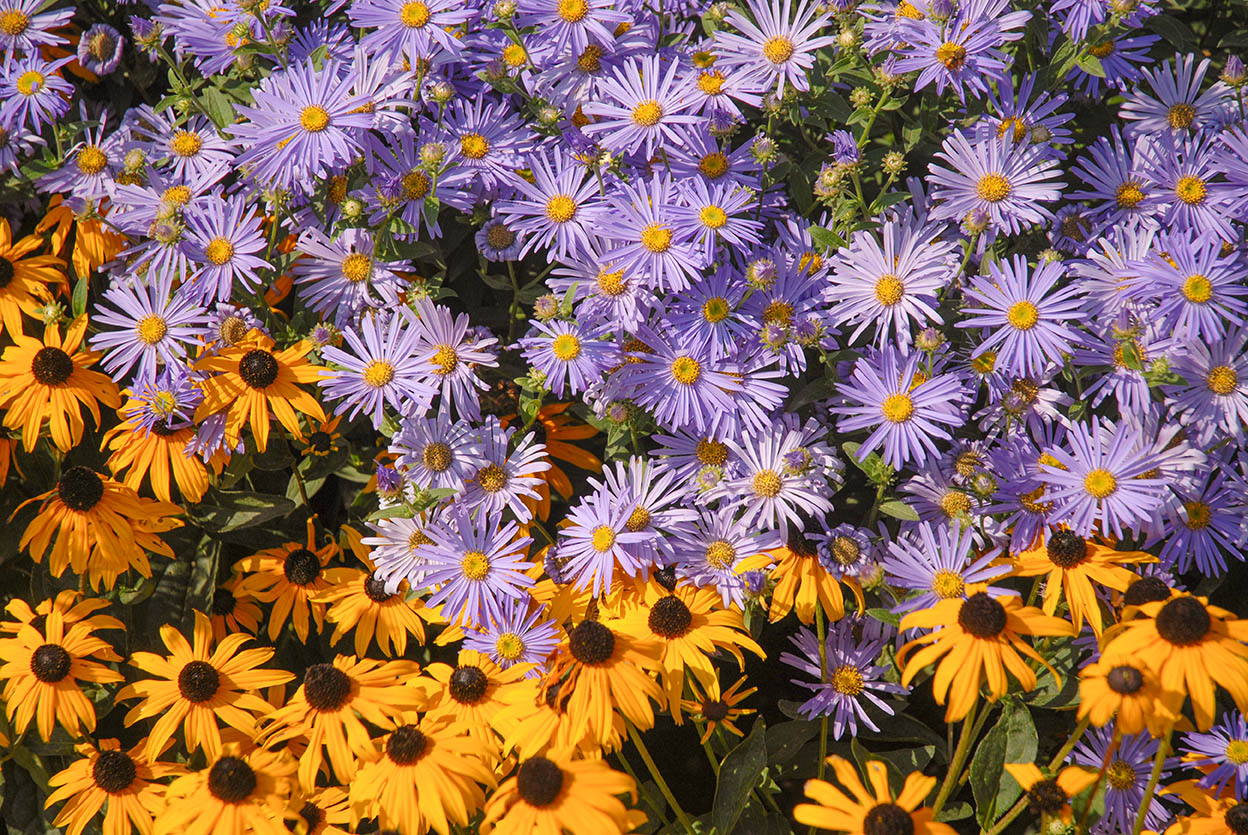
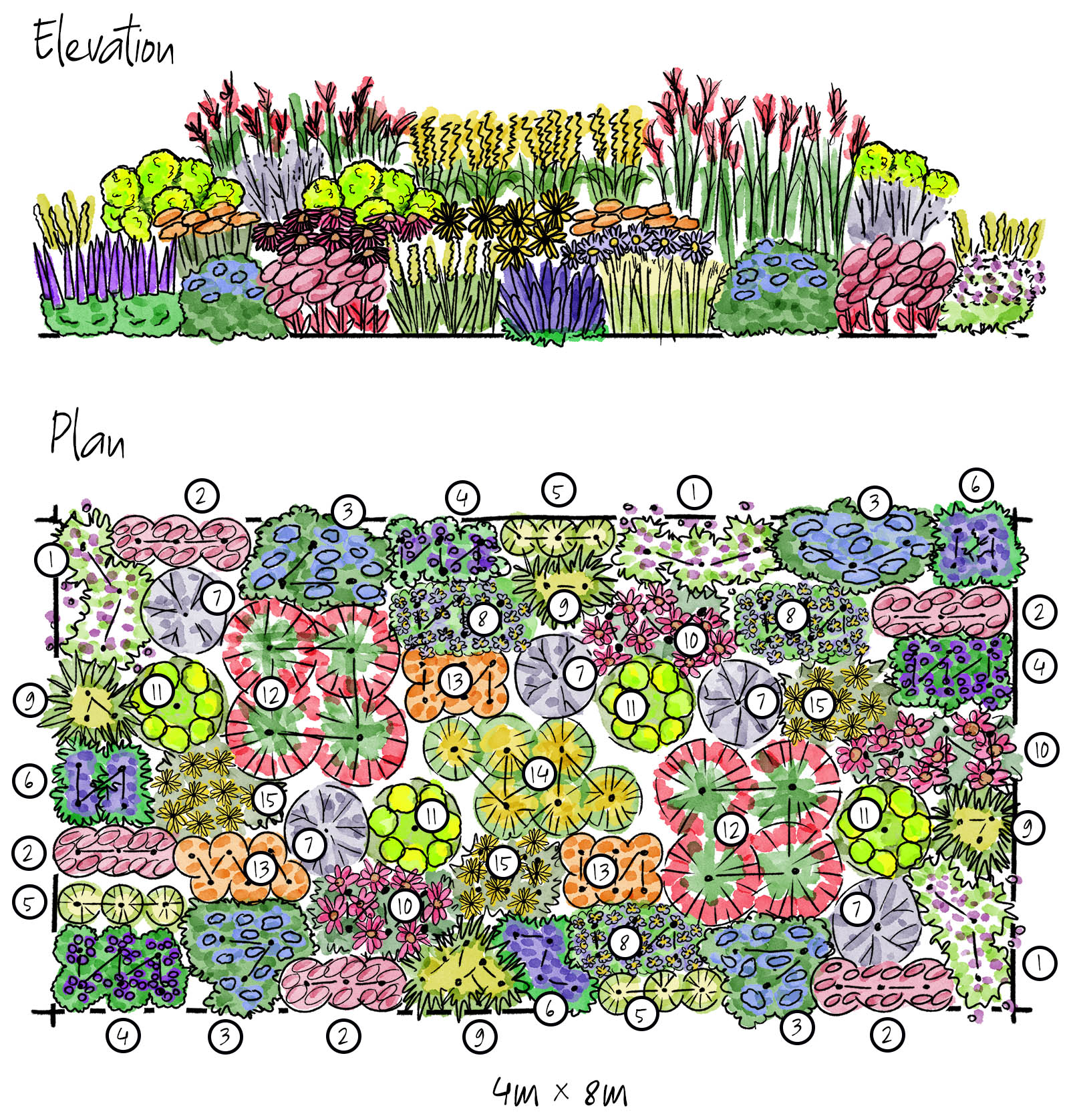
Perennial display planting scheme
Public spaces play a vital role in urban and suburban landscapes, offering aesthetic appeal, environmental benefits, and areas for relaxation and recreation. Traditionally, many local authorities have relied on annual bedding plants to add seasonal colour to parks, streetscapes, and community gardens. However, the use of perennials instead of annuals is gaining popularity due to their numerous advantages, including sustainability, cost-effectiveness, and ecological benefits as well as offering a more modern aesthetic.
One of the primary advantages of perennials is their longevity. Unlike annual bedding plants, which complete their life cycle within a single growing season and must be replanted every year, perennials return year after year. This reduces the need for frequent replanting, minimising the environmental impact associated with soil disturbance, excessive water use, and the carbon footprint of transporting and replacing plants annually. Also, vulnerable young bedding plants are often grown using peat compost which contributes to the destruction of peatlands, some of our most effective carbon sinks.
Although perennials often have a higher initial purchase cost compared to annuals, they prove to be more economical in the long term. The reduced need for replanting, along with lower maintenance requirements, translates into significant savings on labour, materials, and resources. The organisations responsible for public spaces can allocate these savings to other community projects while still maintaining vibrant landscapes.
Annual bedding plants require regular maintenance, including watering, fertilising, deadheading, weeding and pest control. Perennials, once established, generally require less intensive care and fewer chemicals. Many species are drought-tolerant and adaptable to various soil conditions, making them a practical choice for large-scale public plantings where constant maintenance is not feasible.
Perennials contribute significantly to local ecosystems. Their deep root systems improve soil health, prevent erosion, and enhance water retention. Additionally, they provide long-term habitats and food sources for pollinators such as bees and butterflies whereas bedding plants are usually bred to be sterile and do not produce pollen. Unlike many annuals, which may be chosen primarily for their ornamental value, many perennials are British native or well-adapted to local climates, boosting biodiversity, and reducing the need for chemical fertilisers and pesticides.
While annuals provide instant bursts of colour, perennials offer seasonal variety and year-round interest. Many species bloom at different times of the year, ensuring continuous visual appeal. Moreover, perennials often have attractive foliage, seed heads, or structural elements that add texture and beauty even in the dormant seasons.
The shift from annual bedding plants to perennials in public spaces is a practical and environmentally responsible choice. With their longevity, cost-effectiveness, low maintenance requirements, and ecological benefits, perennials create modern, sustainable, and resilient displays that enhance public spaces for everyone to enjoy.
1 Erigeron karvinskianus, 2 Hylotelephium ‘Matrona’, 3 Geranium ‘Rozanne’, 4 Salvia nemorosa ‘Caradonna’, 5 Stipa tenuissima, 6 Nepeta racemosa ‘Walker’s Low’, 7 Perovskia ‘Blue Spire’, 8 Aster × frikartii ‘Mönch’, 9 Sisyrinchium striatum, 10 Echinacea ‘Summer Cocktail’, 11 Euphorbia characias subsp. wulfennii, 12 Miscanthus sinensis ‘Malepartus’, 13 Achillea ‘Terracotta’, 14 Calamagrostis x acutiflora ‘Karl Foerster’, 15 Rudbeckia fulgida var. sullivantii ‘Goldsturm’
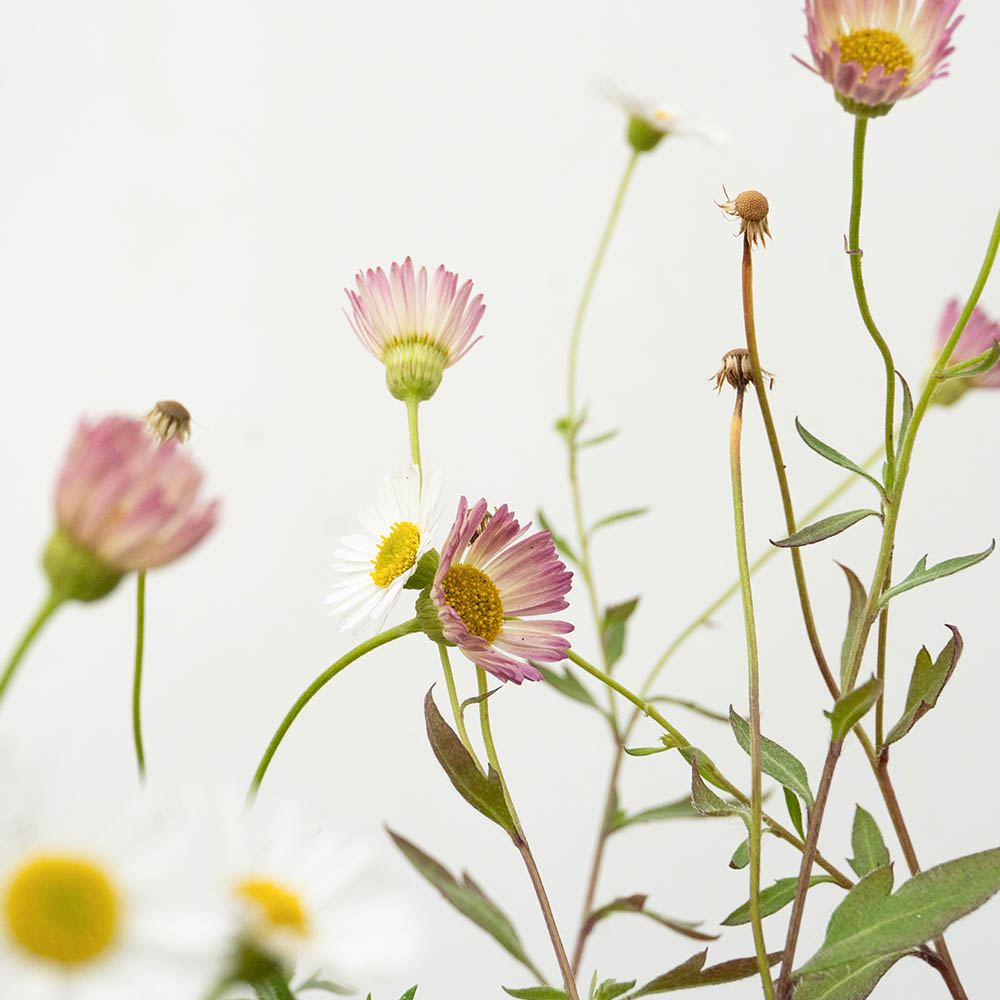
①
Erigeron karvinskianus
A useful, informal perennial that is great for softening the edges of borders and providing a very long flowering period. The daisy-like flowers emerge white and turn pink which look stunning against the dark green foliage.
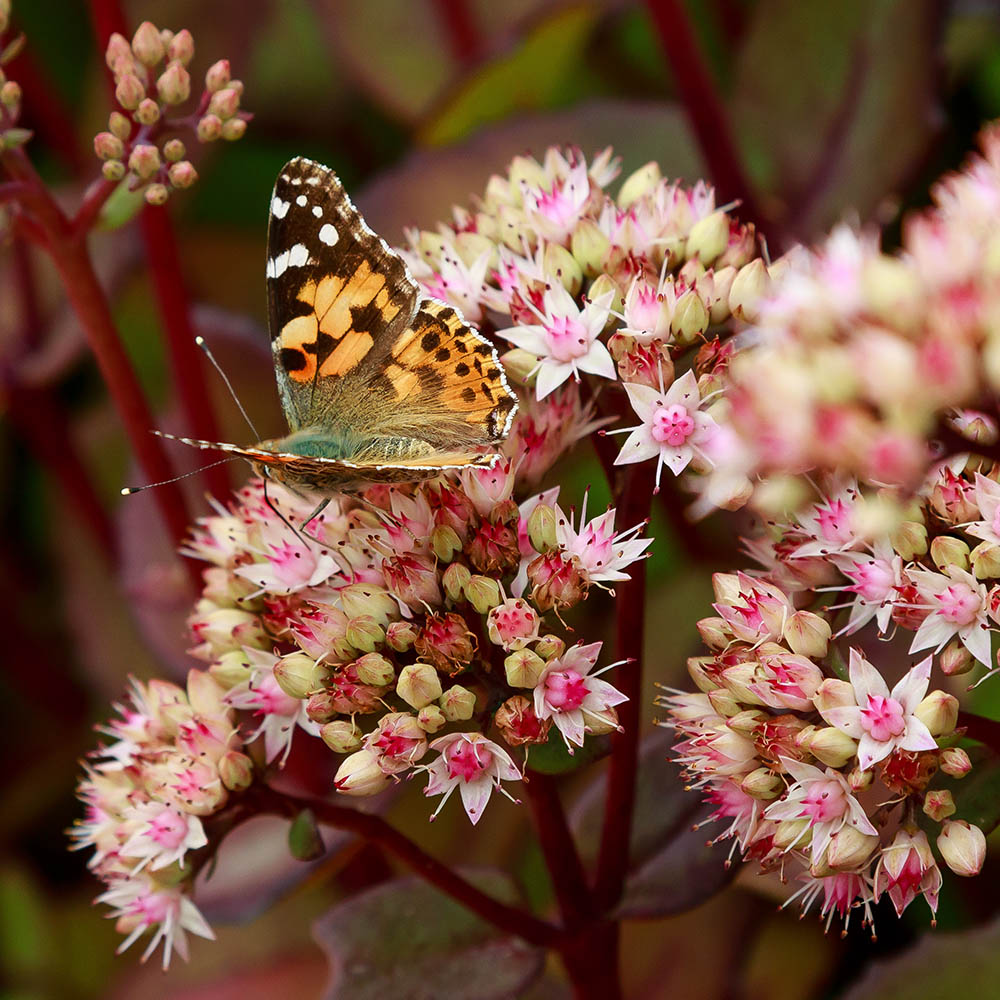
②
Hylotelephium ‘Matrona’
A succulent with bronze leaves on purple stems, which contrast nicely with green-leaved plants. The flowers are pink and are great for adding structure as even the faded flowerheads look pretty in winter.

③
Geranium ‘Rozanne’
A vigorous, spreading herbaceous perennial with lobed, marbled, mid green foliage and striking, saucer-shaped, deep purple-blue flowers with white centres from June to September.
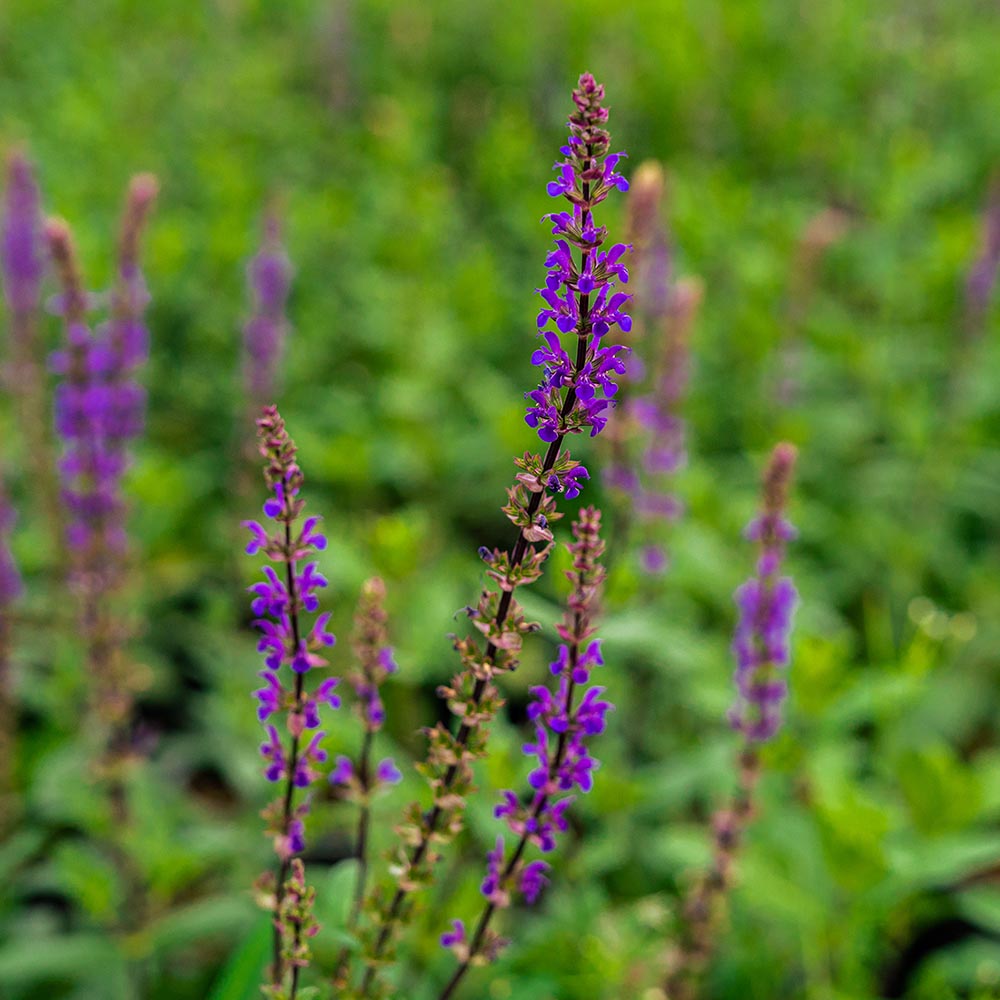
④
Salvia nemorosa ‘Caradonna’
A compact mound-forming perennial with grey-green leaves and dark stems bearing upright racemes of violet-blue flowers in summer. Great for the front or middle of a sunny border.
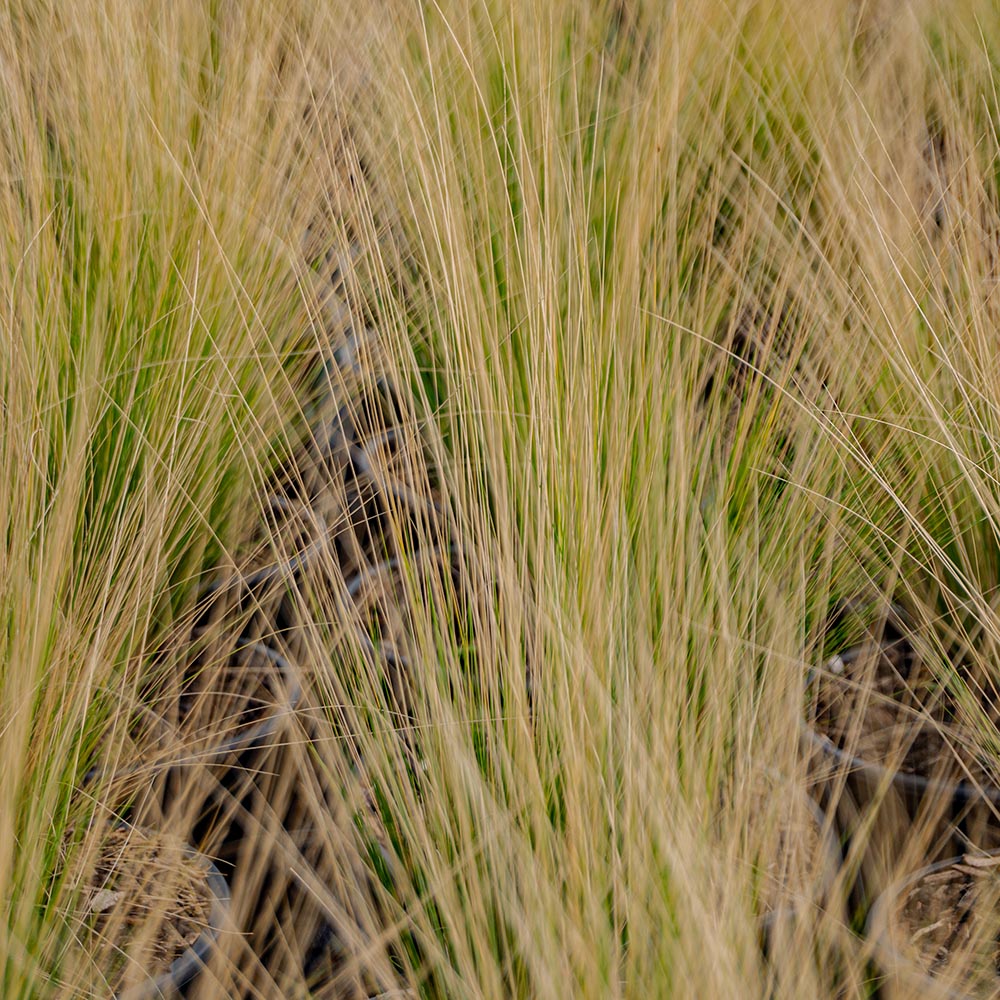
⑤
Stipa tenuissima
An ornamental grass with green foliage and feathery buff flowerheads that compliment taller, flowering perennials. Very effective when planted en masse. Drought-tolerant once established.
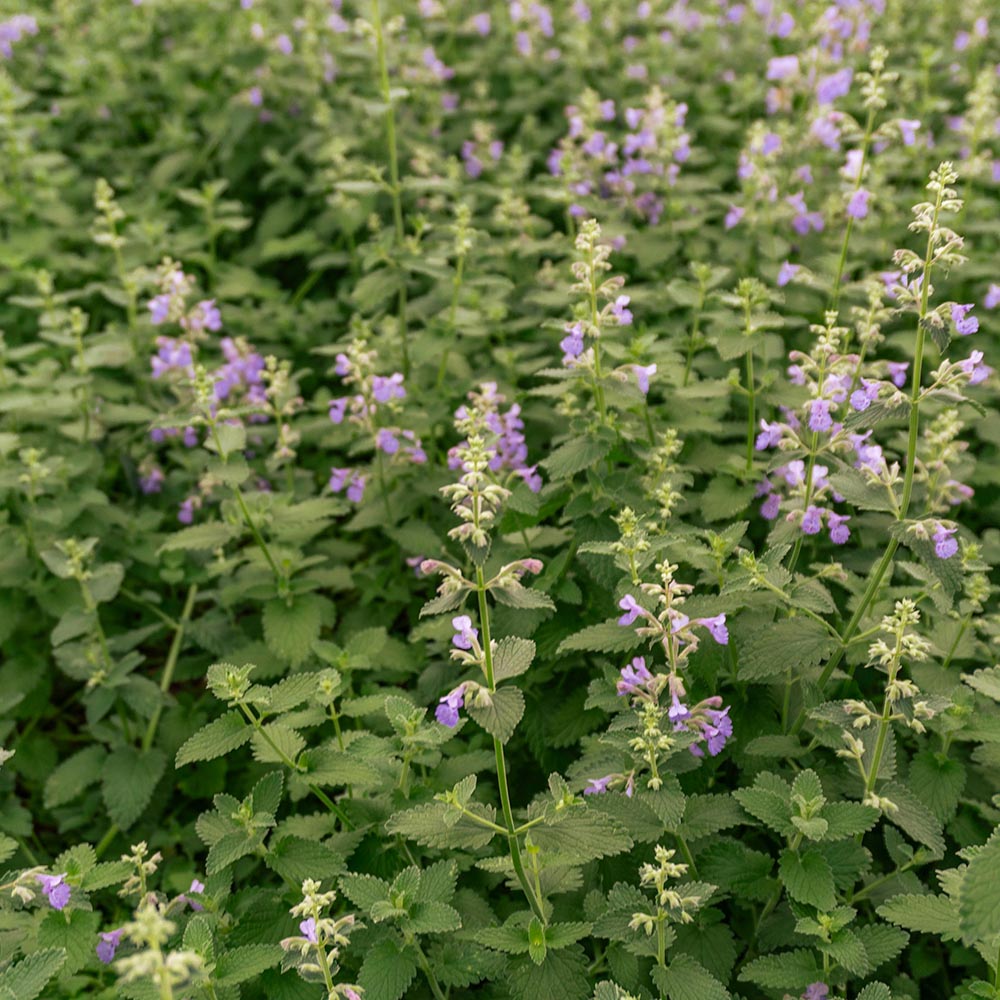
⑥
Nepeta racemosa ‘Walker’s Low’
An aromatic perennial that produces lilac-blue flowers above fragrant green foliage. Attractive to pollinators and ideal for the edge of pathways so the fragrance can be appreciated.
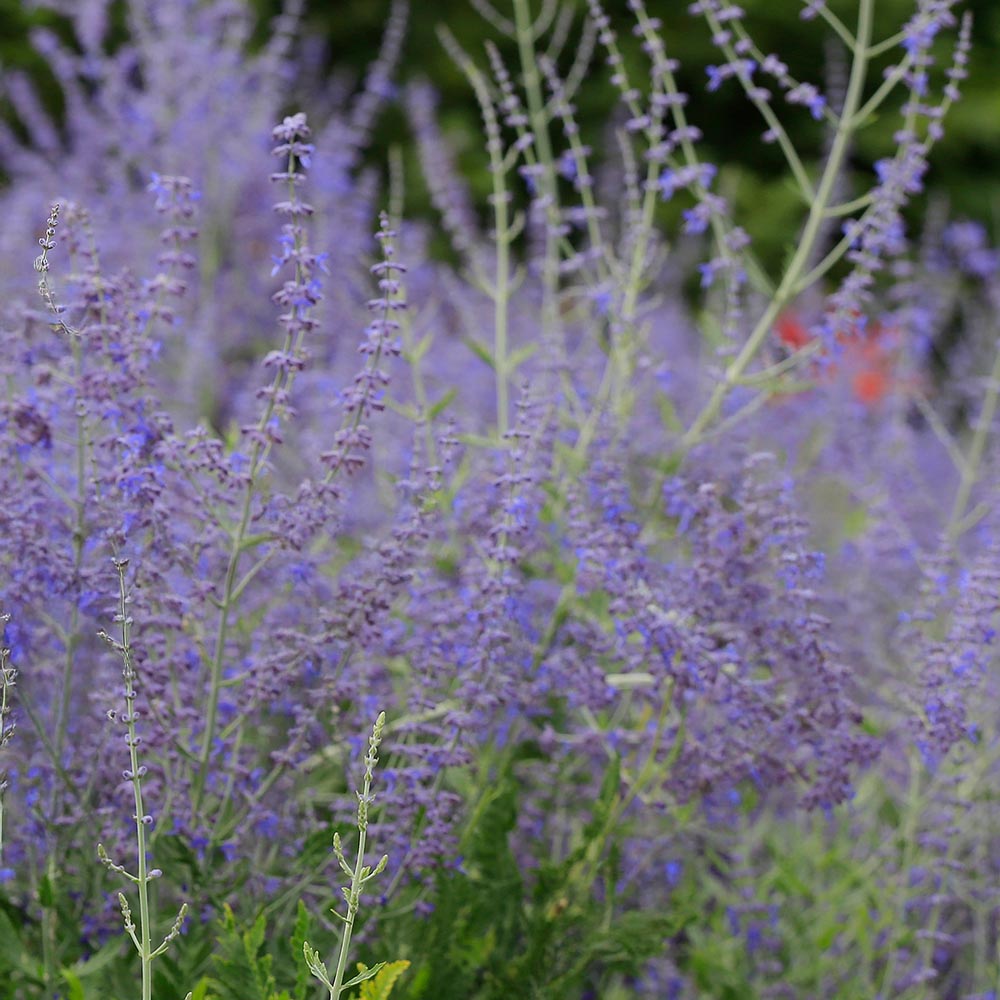
⑦
Perovskia ‘Blue Spire’
An erect, deciduous perennial with slender, white stems that bear aromatic, grey-green leaves and panicles of small, lavender-blue flowers. Perovskia ‘Blue Spire’ is great for planting en masse alongside pathways and positioned in the middle of sunny borders.
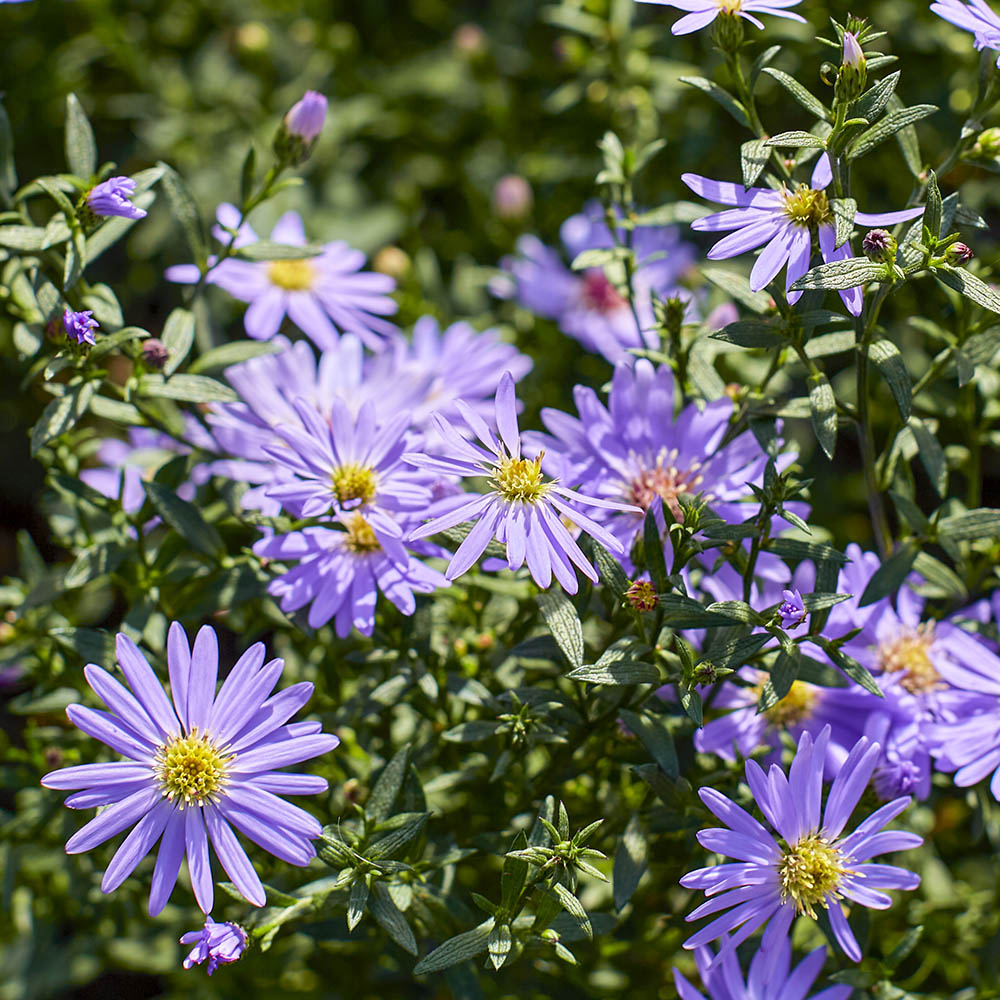
⑧
Aster × frikartii ‘Mönch’
An upright, clump-forming perennial, with dark green foliage, that produces purple daisy-like flowers with yellow centres. Attractive to pollinators and provides a splash of colour into the autumn months.
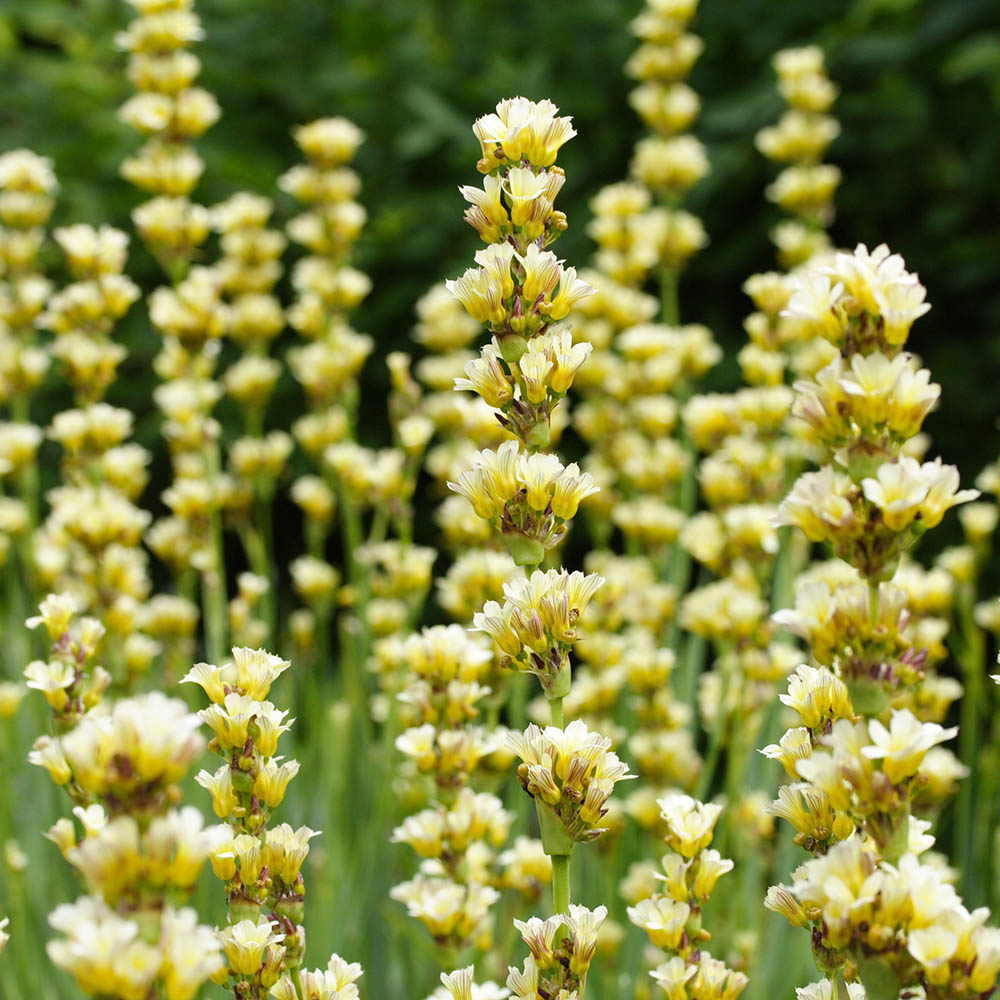
⑨
Sisyrinchium striatum
A tall perennial with grey-green lance-shaped leaves. In summer, it has upright stems of pale yellow flowers.
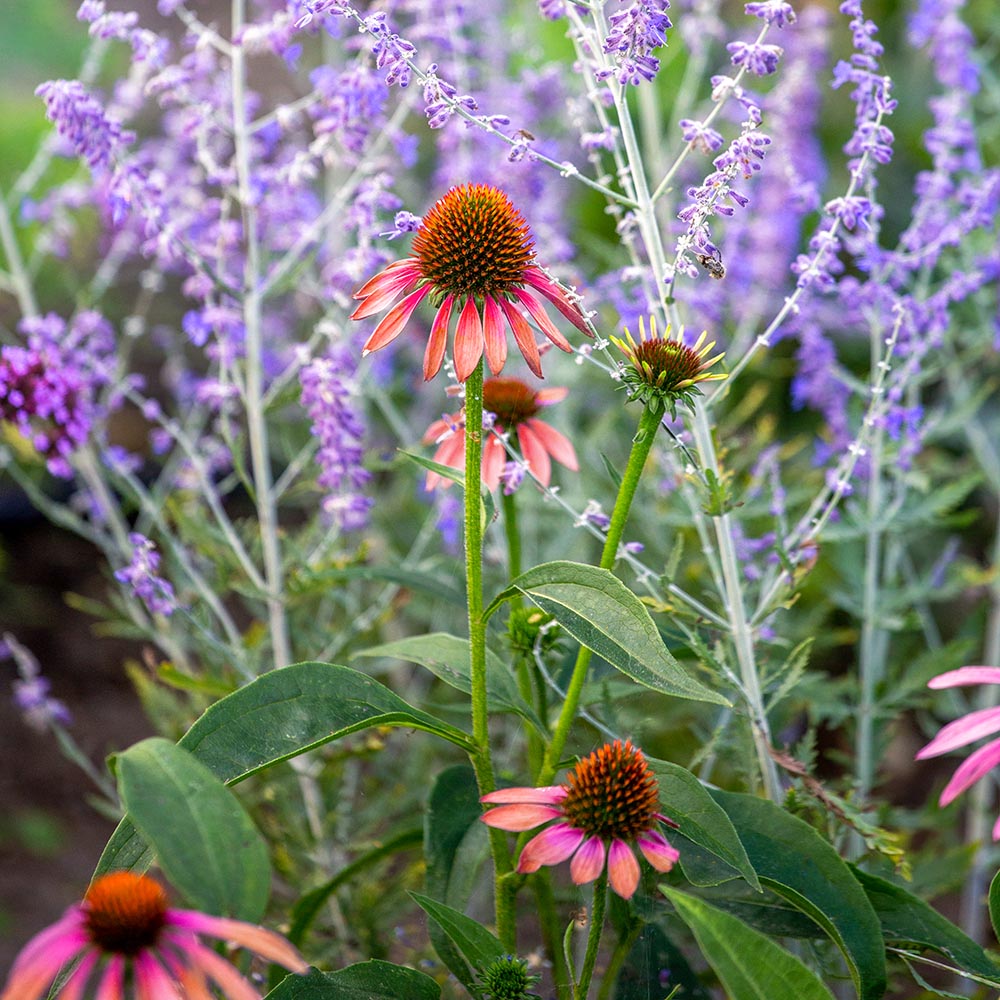
⑩
Echinacea ‘Summer Cocktail’
An compact variety of coneflower that has ovate, hairy foliage and large, daisy-like flowers with orange-brown centres. The petals are orange to start with then gradually turn salmon pink. Great for pollinators.
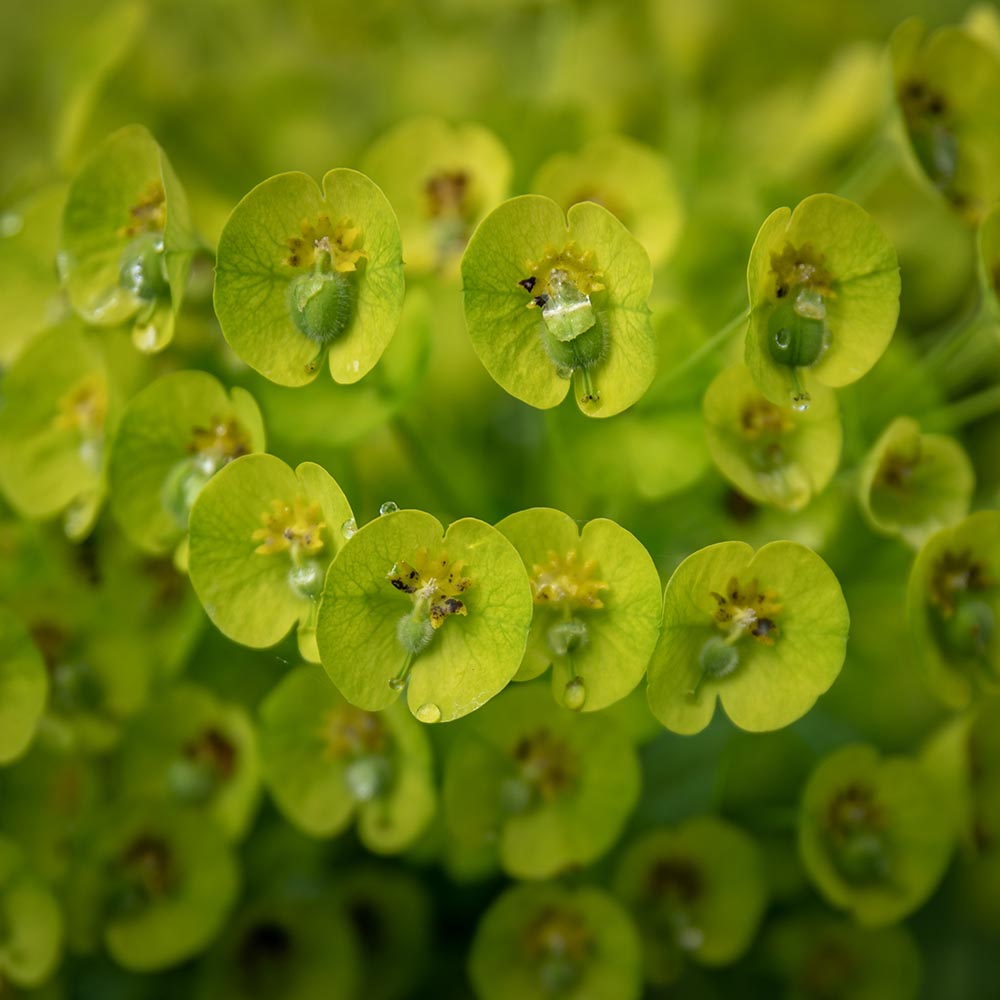
⑪
Euphorbia characias subsp. wulfennii
An upright shrub with heads of vibrant, lime green flowers and oblong, grey-green foliage. Brings structure to landscapes with its natural, rounded shape and architectural leaves. Native to the Mediterranean and is very drought tolerant once established.
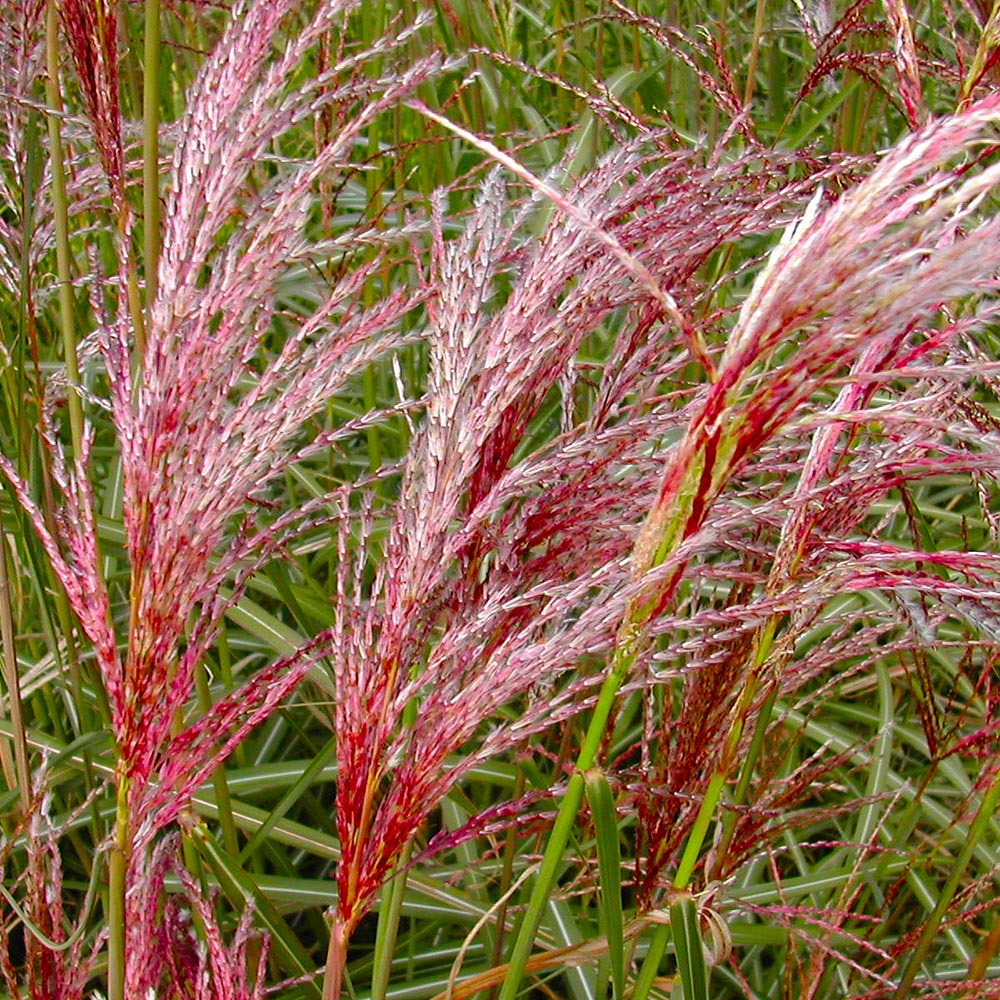
⑫
Miscanthus sinensis ‘Malepartus’
A grass with arching leaves that have a white stripe along the centre. Its feathery flowers are a pretty red-brown. Perfect for adding, height, colour and movement to a mixed border.
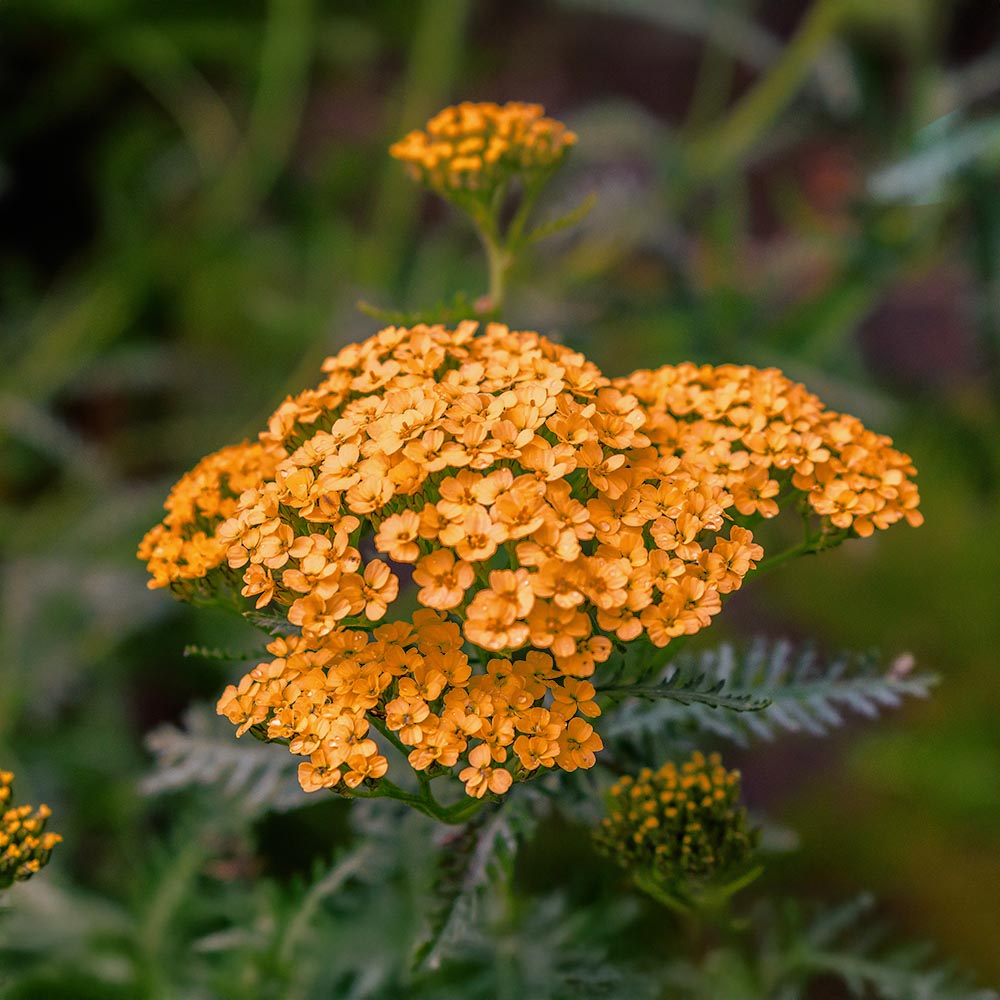
⑬
Achilliea ‘Terracotta’
Achillea is a striking drought-tolerant perennial with green feathery foliage and flat-topped orange-peach flowers. The flowers are ideal for attracting pollinators, including bees and butterflies, and its deep roots help to improve soil structure.
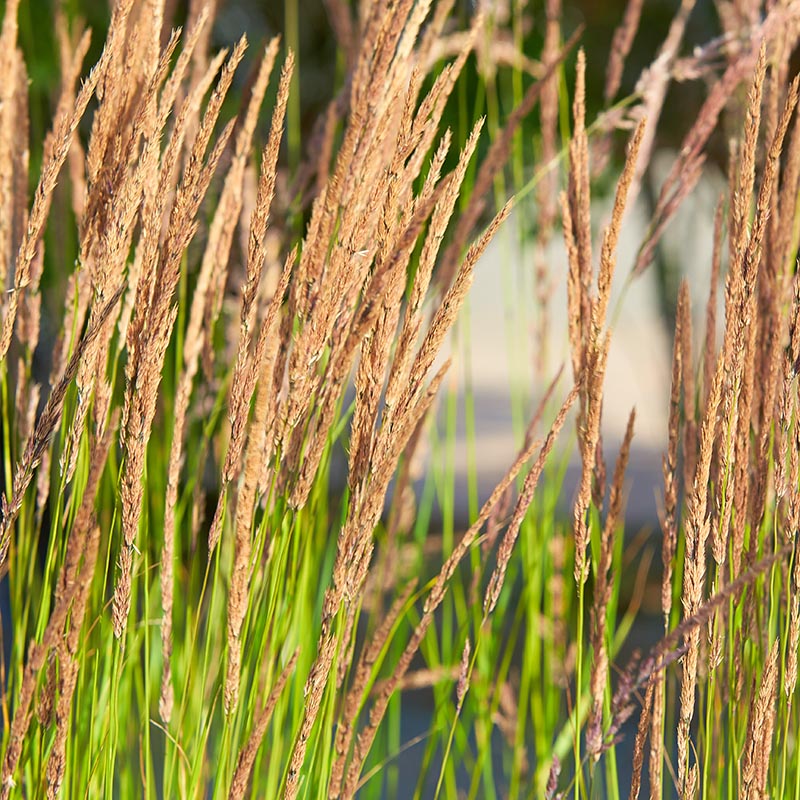
⑭
Calamagrostis x acutiflora ‘Karl Foerster’
A clump-forming, upright grass with arching leaves which emerge in early spring and feathery plumes in summer that later fade to buff in autumn. Looks striking when planted in groups. The height and erect habit make this grass ideal for forming a screen and it brings great winter interest when its stems catch the frost.
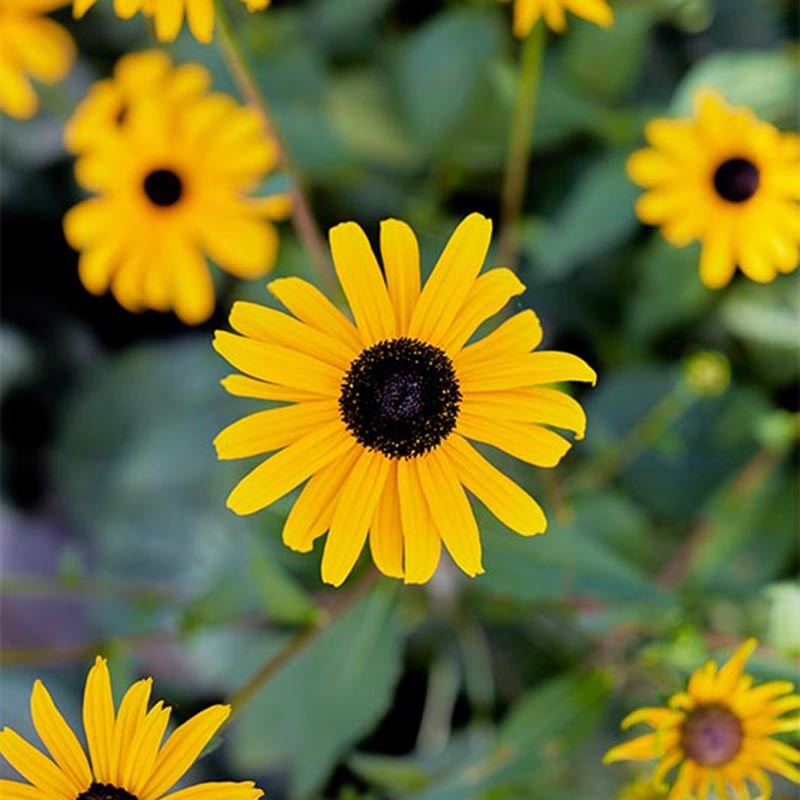
⑮
Rudbeckia fulgida var. sullivantii ‘Goldsturm’
A perennial with large, daisy-like, yellow flowers with black-brown centres from summer to autumn. Rudbeckia fulgida var. sullivantii ‘Goldsturm’ is particularly striking when planted in drifts and works well combined with ornamental grasses.

